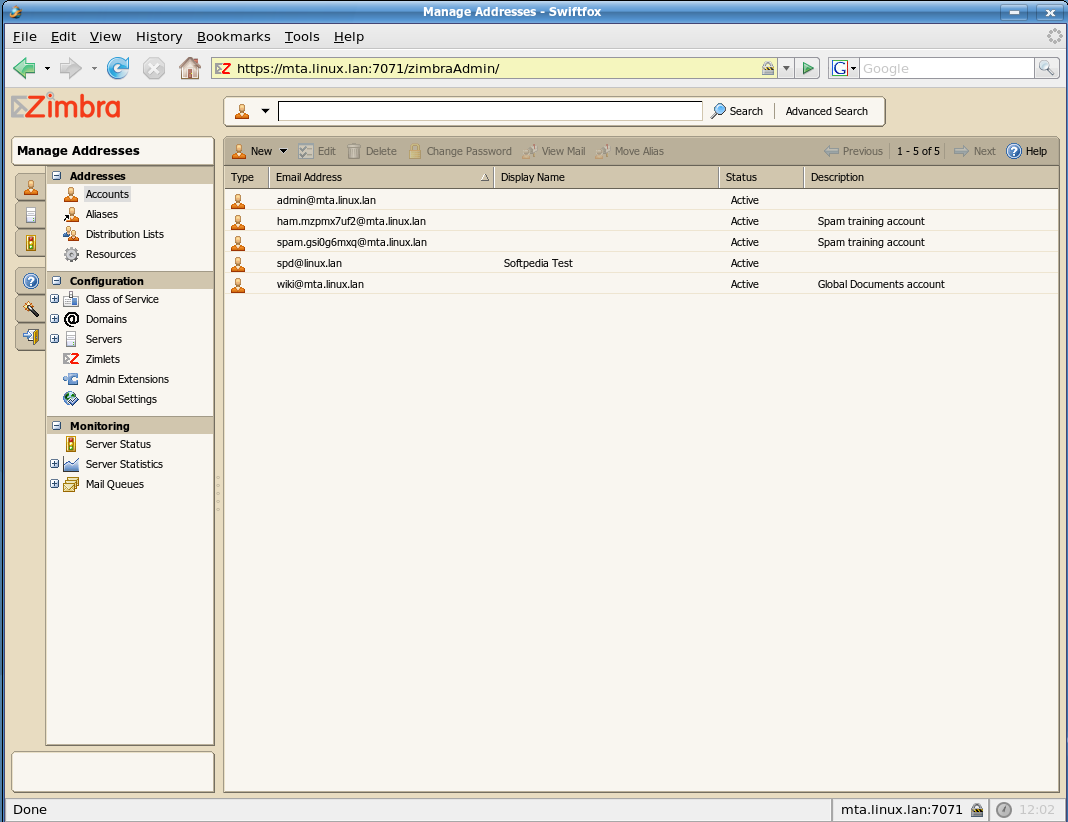Install Zimbra 7 Debian Screenshots
Maybe they released some new install packages on the zimbra site. I can't find any tutorials to install it on Debian. Hack Password Facebook 2011. Screenshots; Blog. Install a standard Debian Etch system and update it. 7 Install Zimbra 7.1 Start The Installation. I’ll show you some screenshots. I'm pretty sure I read somewhere that this install was done from a Debian. 'apt-get install sqlite3' 7. Screenshots; TurnKey.

Zimbra Collaboration Suite ( ZCS) is an Open Source, collaborative platform for email servers, developed in two editions, Open Source edition ( Free) and Network Edition ( Paid), which provides services such as LDAP, SMTP, POP and IMAP, webmail client, calendaring, tasks, antivirus, antispam and others. This tutorial describes how to install Zimbra Collaboration Suite Open Source Edition on a CentOS/RHEL 7 server. Requirements • An external DNS server with both A and MX valid records to point to your Zimbra mail server IP Address.
• A clean without any mail,databases, LDAP, DNS or http servers up and running. • A static IP Address assigned to network interface. Step 1: Install System Packages 1.
Before we proceed with Zimbra Collaboration Suite installation process, first login to your server console with root privileges and install the following packages: # yum -y install unzip net-tools sysstat openssh-clients perl-core libaio nmap-ncat libstdc++.so.6. Fig 02: Disable SELinux in CentOS 7 To completely disable Selinux on CentOS, open /etc/selinux/config file with a text editor and set the line SELINUX to disabled. Assure that is also installed on your system by issuing the following command: # yum install wget Step 2: Configure System Hostname 4. In order for Zimbra to function correctly you must set the local machine hostname and FQDN to point to your server IP Address by running the below commands from root account: # hostnamectl set-hostname mail # echo '192.168.0.14 mail.centos7.lan mail ' >>/etc/hosts # cat /etc/hosts Replace the system hostname and FQDN values accordingly in order to match your own domain settings. Test the hostname and FQDN values by issuing the ping command against both records. Grease We Go Together here.
# ping -c1 mail.centos7.lan # ping -c1 mail. Fig 03: Set System Hostname Step 3: Add a Static IP Address 5. If your server uses a DHCP dynamic IP Address, then you need to edit your network interface card and configure to use a static IP Address. Get the network interfaces information using ip addr command and identify your server external NIC (usually something like enp0s3 or eth0).